How to easily and accurately calculate the power of a heating radiator?
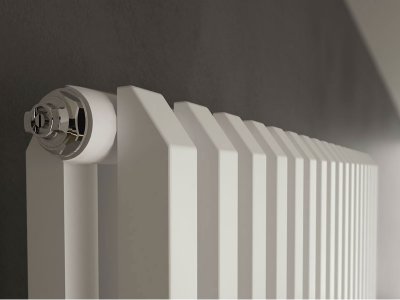
At the initial stage of designing a new building or carrying out renovations in a building from scratch, it is imperative to calculate the required battery power.
In accordance with the obtained result, it is determined exact number of radiators to fully provide heat to a house or apartment even during maximum winter temperature fluctuations.
There are several calculation methods.
Content
Direct relationship between the type of heating radiator and the calculation method
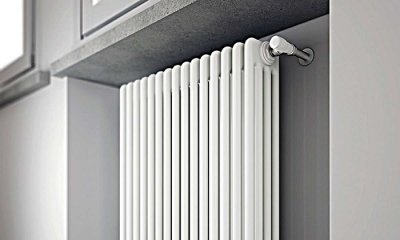
When installing standard heating sources sectional there are no difficulties, since their power is indicated in advance among other technical parameters.
In a situation where the manufacturer specifies the value of the coolant flow rate in the specifications, it is generally accepted that the consumption 1 liter of this liquid per minute is equal to 1 kW of power.
Important! When considering different battery options, it is worth remembering that for the same dimensions They have different power ratings because the source material varies from bimetallic to cast iron.
There is an average power rating for each type of radiator. Section of the heating source with axis distance of 0.5 m emits heat:
- Cast iron - 145 W.
- Bimetal - 185 W.
- Aluminum - 190 W.
Often this indicator differs from the above due to the fact that the height of the heating battery varies from 0.2 m to 0.6 m.
With non-standard parameters of heating radiators in calculation methods thermal radiation adjustments are made.
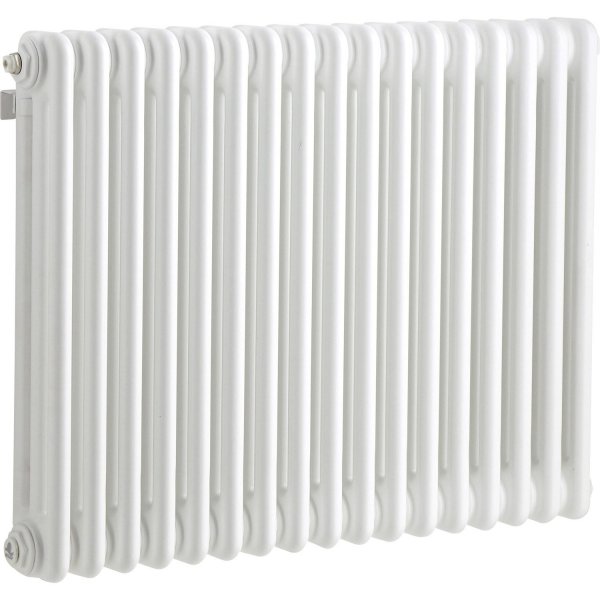
Photo 1. Steel radiator for heating model Tesi 2, section length 45 mm, manufacturer - "Irsap", Italy.
The lower the value height of the heating source (and, accordingly, its area), the lower the heat radiation index.
You can make adjustments to the result using the installed coefficient, obtained from the proportion of the existing radiator height to the standard value.
How to calculate the thermal power of batteries
Depending on the number of indicators taken into account, they are divided into 2 types.
Simplified method

It is generalized and is widely used for independent non-professional calculations.
The main criterion taken into account in the simplified calculation method is squareIt is established that 100 W of emitted energy is enough for 1 sq. m..
To fully heat the entire room, you need to calculate using the formula: Q=S*100, Where Q — the required thermal power, S — room area (m2).
Detailed formula
This is a generalized method for calculating heating for a room, but already taking into account all possible factors that influence the final result. The final formula looks like this:
Q=(S*100)*a*b*c*d*e*f*g*h*i*j, where the additional constituent elements are coefficients determined according to the exact degree of the individual factor:
- a — the number of external walls in the room of interest.
- b — the orientation of the room relative to the cardinal directions.
- c — climate conditions.
- d —the level of insulation of external walls.
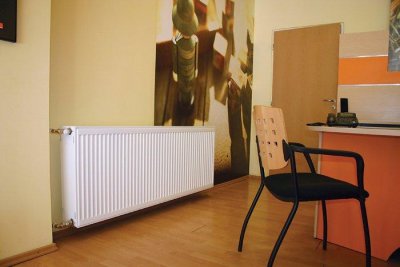
- e —the height of the ceilings in the room.
- f —design features of the ceiling and floor.
- h —quality of frames.
- i —window size.
- j —the degree of closure of the heating source.
- k —battery connection diagram.
Factors Affecting the Calculation
The following factors influence the calculation of the power of heating radiators.
Orientation of rooms to the cardinal points
It is generally accepted that if a room's windows face south or west, then it has sufficient sunlight, therefore in these two cases coefficient "b" will be equal to 1.0.
Adding to it in 10% required if the room windows are facing east or north, since the sun here has virtually no time to heat the room.
Reference! For northern regions, this indicator is taken as follows: 1.15.
If the room faces the windward side, the coefficient for calculation increases. up to b=1.20, when parallel to wind flows - 1.10.
Influence of external walls
Their number is directly determined indicator "a". So, if the room has one outer wall, then it is taken equal to 1.0, two - 1.2. The addition of each additional wall leads to an increase in the heat transfer coefficient. by 10%.
Dependence of radiators on thermal insulation
Proper insulation of walls will help reduce the cost of heating an apartment or house. coefficient "d" helps to increase or decrease the thermal power of heating batteries.
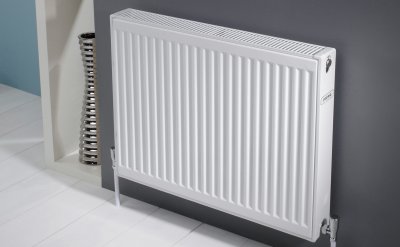
Depending on the degree of insulation of the external wall, the indicator is as follows:
- Standard, d=1.0. They are of normal or thin thickness and are either plastered on the outside or have a thin layer of thermal insulation.
- With a special method of insulation d=0.85.
- If there is insufficient resistance to cold -1.27.
If space permits, it is permissible to fix thermal insulation layer to the outer wall from the inside.
Climate zones
This factor is determined by low temperature levels for different regions. So c=1.0 in weather up to -20 °C.
For areas with cold climates the figure will be as follows:
- c=1.1 at temperature conditions up to -25 °C.
- c=1.3: up to -35 °C.
- c=1.5: below 35 °C.
Warm regions also have their own gradation of indicators:
- c=0.7: temperature up to -10 °C.
- c=0.9: light frost to -15 °C.
Room height
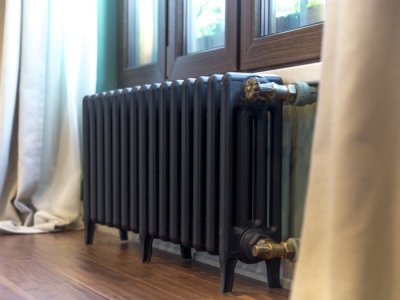
The higher the ceiling level in a building, the more heat that room requires.
Depending on the distance from the ceiling to the floor, a correction factor is determined:
- e=1.0 at a height of up to 2.7 m.
- e=1.05 from 2.7 m to 3 m.
- e=1.1 from 3 m to 3.5 m.
- e=1.15 from 3.5 m to 4 m.
- e=1.2 over 4 m.
The role of the ceiling and floor
The contact with the ceiling also helps to retain heat in the room:
- Coefficient f=1,0 if there is an attic without insulation and heating.
- f=0.9 for an attic without heating, but with a heat-insulating layer.
- f=0.8, if the room above is heated.
The floor without insulation determines the indicator f=1,4, with insulation f=1,2.
Frame quality
To calculate the power of heating devices, it is important to take this factor into account. For a window frame with single-chamber double glazed window h=1.0, respectively for two- and three-chamber - h=0.85. For an old wooden frame, it is customary to take into account h=1.27.
Window size
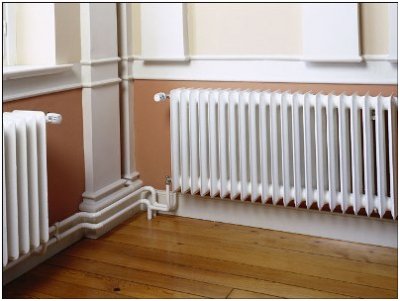
The indicator is determined by the ratio of the area of window openings to the square meters of the room. Usually it is equal to from 0.2 to 0.3. So the coefficient i= 1.0.
With the obtained result from 0.1 to 0.2 i=0.9 to 0.1 i=0.8.
If the window size is higher than the standard (ratio from 0.3 to 0.4), then i=1.1, and from 0.4 to 0.5 i=1.2.
If the windows are panoramic, then it is advisable to increase the ratio with each increase by 0.1 raise i by 10%.
For a room where the balcony door is regularly used in winter, it automatically increases and another 30%.
Battery closure
Minimal fencing of the heating radiator helps to heat the room faster.
In the standard case, when the heating battery is located under the window sill, the coefficient j=1,0.
In other cases:
- Fully open heating device, j=0.9.
- The heating source is covered by a horizontal wall projection, j=1.07.
- The heating battery is covered with a casing, j=1,12.
- Fully enclosed heating radiator, j=1,2.
Connection method
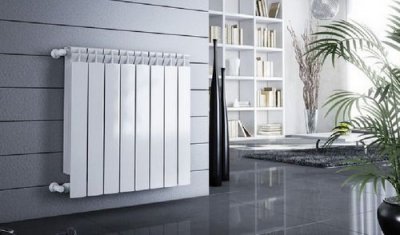
There are several ways to connect heating radiators and each of them is determined by the indicator k:
- The method of connecting radiators "diagonally". It is standard, and k=1.0.
- Connection "from the side". The method is popular due to the short length of the supply line, k=1.03.
- Using plastic pipes by the method "from below on both sides", k=1.13.
- Solution "from below, on one side" is ready, connection is in progress to 1 point supply pipe and return pipe, k=1.28.
Important! Sometimes, to improve the accuracy of the results, they use additional correction factors.
Useful video
Check out the video that explains how to calculate the power of a heating radiator.
The importance of considering all factors
The abbreviated formula for calculating heating capacity is easy to use, but does not take into account certain Features of the premisesTo obtain an accurate result when calculating the power of heating radiators, it is important to take into account all available factors.






